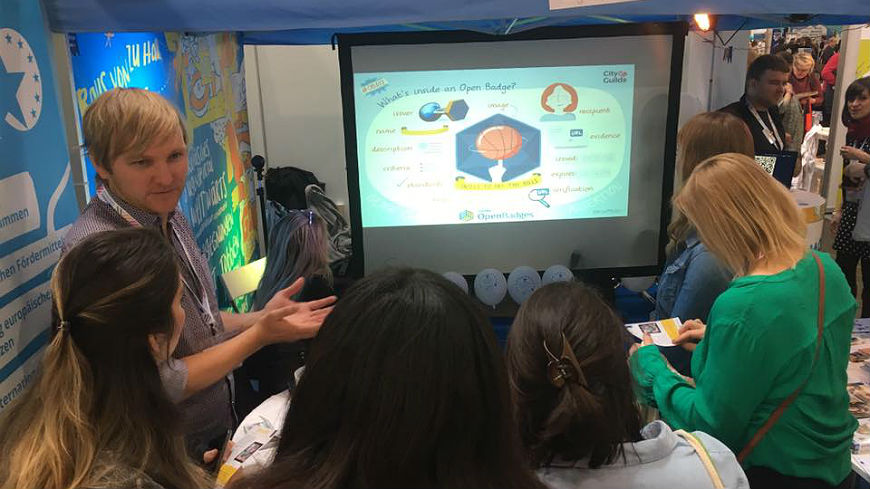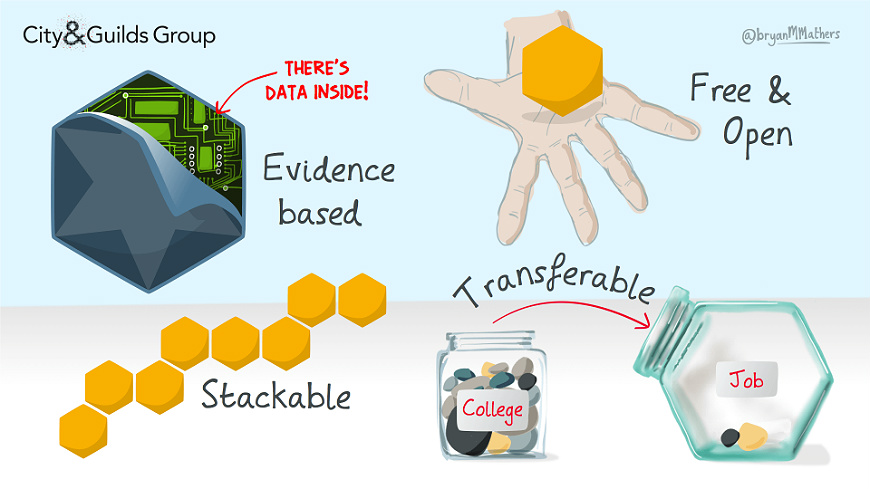Explaining Open Badges with Nerijus Kriaučiūnas
by Anne Kivimäe
26/06/2018
The talk about digital Open Badges has been circling youth work for some time (see for example an article here). Recognition of learning in youth work has been an issue for much longer. Nerijus Kriaučiūnas gave Coyote an insight on how these two are connected and why this connection should be better known among different stakeholders in youth work.
Nerijus is a freelancer, delivering coaching and training in the youth work field at local and European levels, who has been involved in crafting digital badges with Badgecraft for years now. Nerijus is also co-managing the training centre Daugirdiskes and training and education organisation Nectarus in Lithuania, where Nerijus is from and currently living.
What are the three most important reasons why a youth worker, trainer, researcher or policy maker should get acquainted with what Open Badges are and how they work?
Our life is rapidly changing. The time we spend in digital environments has increased and for me it seems evident, that if we are doing many things in the digital environment the recognition tools should also be digital. Tools on paper do not work for the digital life – they can, but not as good. Open Badges are a digital technology.
The second argument is in what Open Badges can do in terms of solutions. Open Badges are the container for the data about learning pathways, about development, about activities, about achievements. If we value individual introspective reflection, which is valuable in youth work, if we value processes of dialogue between two people helping each other to understand better what we are experiencing, developing, etc., digital badges can offer the next step. For example, being involved in youth exchange, training programme or youth work programme, one could realise through reflection that he/she is getting better in a specific skill. As a next step one could talk about it with the mentor or peer – they give feedback. And then it would be good to reveal new skills to the outside world. This is where the badges come to help – one could share achievements with whoever and whenever it makes sense.
|
|
|
© Properties of Open Badges by @bryanMMathers is licensed under CC-BY-ND |
The third argument is especially important for the youth work sector. Open Badge technology is rapidly being adopted in other sectors and this is happening much faster than in the youth sector. This is unfortunate, maybe due to a lack of resources or knowledge and access to technology, the youth sector is still catching up. If we start using more widely the same technology that is used in higher education, in some business companies, in schools, then we don’t need to make more efforts to further the branding of the tool, it is already used and recognised. Together with partners, we adopted Open Badges for youth work some years ago with the help of funding from the European Commission. There are already a number of youth work organisations using Open Badges. But of course, there are actors in our field who should co-operate better and who do need to catch up.
Who would benefit the most from using the badges in youth work and how?
There is no specific profile of young people or youth workers, who would benefit the most. In general, the most important beneficiaries would be the ones who gain experiences and develop necessary skills through youth work and in situations when they need to display those in a meaningful way to others. If someone has done very well in the youth sector – as a young person, youth leader, youth worker – and they continue working within the sector, a person is recognised through the experience. But once one has moved outside the sector, it is difficult to achieve recognition. With badges, young people could take the collection of badges showing their experiences gained through youth work and then share it as evidence in other contexts. I would say that Open Badges help to showcase skills and to have opportunities to talk about youth work experiences.
Youth work has been struggling to get recognition and visibility in general and particularly difficult has been acknowledgement and recognition of the learning taking place in youth work. Young people may well gain some of their most valuable competences participating in youth work, but getting these recognised in formal education or by employers is still very hard. This in spite of a variety of instruments available. Do you think Open Badges could be so-called game-changers in this and why?
First – Open Badges are not only good for explaining what has been gained from youth work or what youth work is about. They also help to show that the youth sector is using systemic tools. Sometimes others cannot understand why youth work doesn’t have a simple and structured way of working. We know why – because we want to respond to diverse needs, we want to respond to different situations and we are able to do it, we are trained to do it – for us it is a natural way of working. Still, other sectors are much more organised. With the help of badge systems, we can have dynamics, flexibility and diversity included in recognition. At the same time, we can also show that we are using systemic tools to help young people to understand better what they are gaining and we can communicate it in a professional way. Therefore, for me it’s not only that we explain ourselves better, but that we use a systemic, organised tool that is still flexible for our needs.
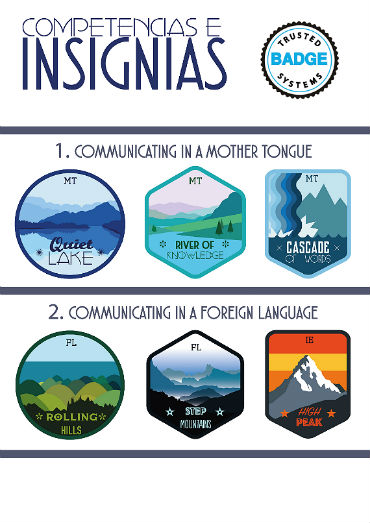
And I’m not saying that Open Badges are the only thing to be used and developed. We also realise the limitations of Open Badges. There are platforms that allow you to record anything that you consider learning, providing you with insights about your habits of learning. There are platforms using machine learning, where, based on how you have learnt in the past, it is possible to offer you best exercises to do next. There are ideas on how to use blockchain for issuing certificates, etc. It is not necessarily Open Badges, but what I want to promote is thinking within our sector that we should look at what is coming rather than only focusing on what we have to solve now. And – it is not just using technology, it is using it smartly and critically.
Digital tools often come with worries about privacy, screen time, etc. – are Open Badges addressing these types of worries, how?
Sometimes when presenting Open Badges to young people I get the critical questions about the privacy, etc. Then at the break, the same young people go online to Facebook, Instagram, Snapchat and they don’t question the privacy there or to whom the data belongs. New things get questioned.
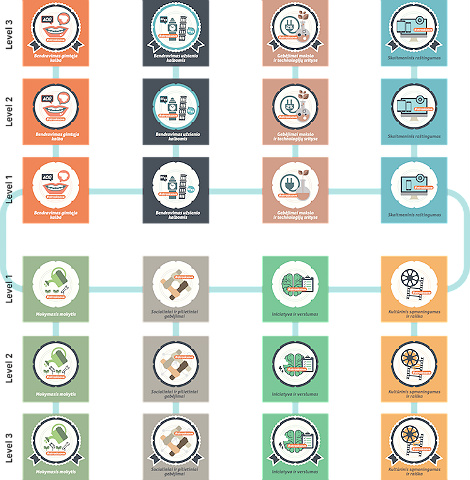
Concerning the ownership of data, Open Badges actually challenge the common practice. For example, when learning and putting it into the format of the badge, the learner owns this achievement. Compare this to the situation when you have to ask for the transcript of your study or in-job training certificate, and perhaps pay for it, as it somehow belongs to the institution.
Thinking about screen time, the talks about it are already outdated as there is more and more content around in diverse forms and soon we will be perhaps talking to machines, rather than looking at screens. The question to discuss is actually not the screen time, but what is changing and what the reality is at all.
One criticism about digital badges, which is especially relevant to youth work, has been that the badges – their meaning, content and what they bring out as valuable – have been designed by people far away, adults who are perhaps not involved with young people at all. As opposed to the real-life situation, when acknowledging, understanding and evaluating, the learning happens rather in partnership with a youth worker and young person. What’s your answer to this – do digital badges make young people less in charge of and involved in their learning and youth workers irrelevant?
It has a lot to do with how the badge system is designed. As technology, the Open Badges allow the involvement of young people and youth workers from the very beginning. In reality, people opt for an easy option – take some template and use it. It is true that to build a tailor-made badge system with participation of young people and youth workers from the beginning will take time and resources. Many organisations cannot afford this. However, I believe it is not about the badges or tools as much as it is about youth work practice acknowledging the need for planning and working for recognition. When introducing badges in organisations it will require much more than starting to use the tool. It will require reflection on the practices, on the objectives and on how to support young people systematically. It is about the quality of youth work. Talking about badges is a way to start talking about goals and about the process and progress. In a way similar to when Youthpass was introduced – it brought along many discussions about learning, support for learning, and recognition of learning.
My opinion is that it should be an obligation to offer young people a well-planned opportunity for recognising learning and skills gained in youth work. This should be asked when funding is provided for organisations and it is more and more happening – the instruments we have, like Youthpass and Portfolio, have influenced a positive change.
You have been involved in developing Open Badge systems for a number of years now: can you point us in the direction of a couple of successful projects, also outside youth work. What are your criteria for success here?
First – a successful badge project is the one that is sustainable, i.e. the badge system will be used after the initial funding has ended. If it doesn’t last, it didn’t prove to be useful for people. Second – I would like a badge project to be a serious project. Not about colours and designs, but about goals that badges are helping to achieve, multiple assessment system and external value. A good badge project is also adaptable to other contexts, other countries. It should be possible to adapt and use it in other places. From the organisation’s viewpoint a good badge system will help to raise the profile of the organisation in the eyes of others – young people or other sectors – that also benefits the recognition of the work done by the organisation. Finally, a good badge system is just a layer to add to already high-quality work. Some examples:
Trusted Badge Systems was a strategic partnership project that involved youth work organisations and representatives of employers. This partnership developed further badge- issuing technology by allowing the completion of quests and uploading evidence when earning a badge. It also created a mobile application Badge Wallet for young people to more easily earn and manage badges. Project partners designed tailor-made badges systems for national volunteering, youth participation, youth entrepreneurship and more.
European Badge Alliance was another partnership which created tailor-made badge systems to be used for almost any type of learning mobility. Now, organisations working with mobility projects can import, adapt and issue badges for school exchanges, VET mobility, youth exchanges, internships abroad, facilitators and organisers of international youth training events and more.
How might it be possible for Open Badges to be used in connection with the two major European level efforts to increase recognition – namely the E+ Youthpass and the Council of Europe’s Youth Work Portfolio? What would be the benefits?
When developing badge technology, we analyse the benefits these European instruments could gain from the badge system and vice versa. All of them are about reflection, about helping to map where you are in terms of learning, competencies and where you want to be.
In general, Erasmus+ Youthpass and the Council of Europe’s Youth Work Portfolio are already including technological solutions, however we need to change the thinking on how it is organised. For example, new technologies offer a much more distributed way for recognition – instead of having one central authority, which decides the skills and the achievements and the measurement scales, other ways of recognition, including Open Badges, are a much more distributed way of communicating and recognising value. Things need to be less centralised.
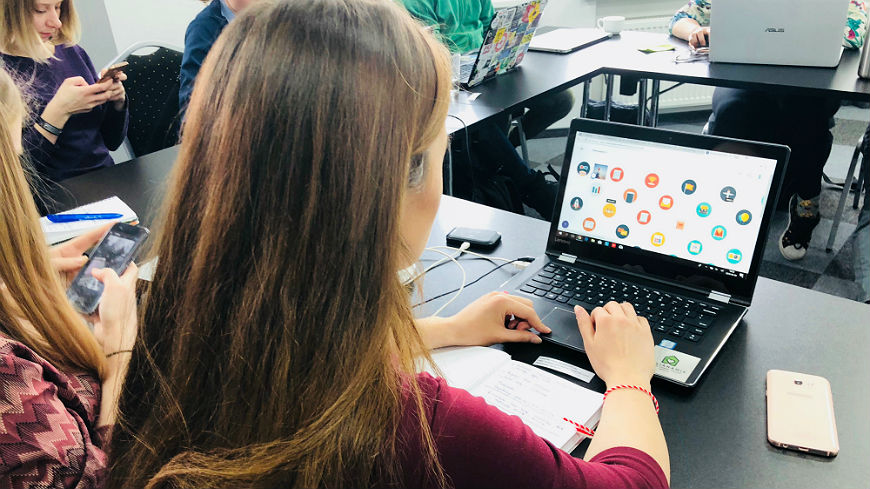
And to conclude with – what is the role of smart/digital youth work in the development of youth work in the coming decade, what should it be?
The role is growing. It is not just the role, it is the necessity – to develop more digital ways and tools and to allocate resources. It is the reality that it is not disappearing, it’s gaining speed and more attention, including at the political level. When you look at funding in youth work, digital technologies are not in the priorities yet – only now we can see political steps being taken in the EU and hopefully this will also be reflected in the next generation of EU programmes. But we shouldn’t also forget other things we are already good at. In my view, digital youth work doesn’t contradict with any other type of youth work we have been doing so far, it only compliments it.

